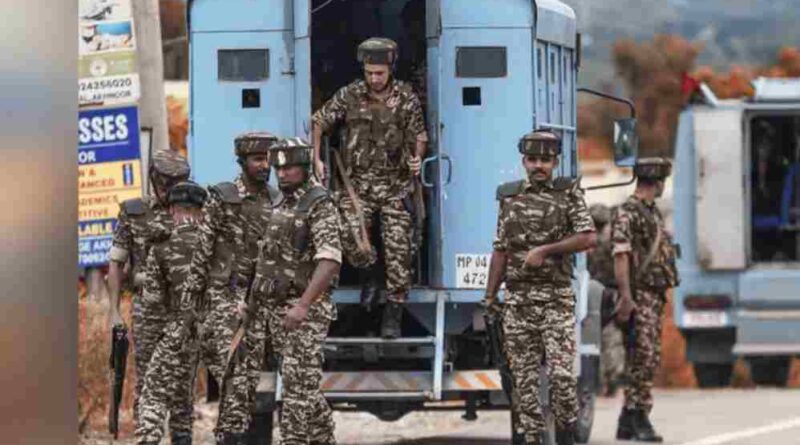India’s Northern Front: Army Sounds Alarm on ‘Triangular Threat’ from Pakistan, China & Terror Proxies
New Delhi, July 4, 2025 — A striking concern is echoing from the corridors of India’s defense establishment. The Indian Army is now openly speaking about a scenario long speculated but rarely acknowledged so directly — a potential three-pronged threat brewing along its northern borders. According to Lieutenant General Upendra Dwivedi, Vice Chief of Army Staff, the dynamics of regional security have shifted, and India must be prepared for the possibility of a conflict where “one border could mean three adversaries.”
This stark warning came while discussing “Operation Sindoori“, a recent military exercise held in the sensitive regions of Jammu and Kashmir. Designed to test India’s combat readiness under multi-front war scenarios, the operation revealed something even more unsettling — active coordination between Pakistan and China, with the latter allegedly supplying real-time intelligence to the former during the exercise.
A New Reality: Coordinated Adversaries
Historically, India has dealt with Pakistan and China as separate threats — each with its unique strategies, terrain challenges, and geopolitical motives. But now, Indian military strategists are preparing for a scenario where these two powerful adversaries, often at diplomatic odds themselves, appear to be collaborating tactically on the ground.
Lt Gen Dwivedi did not mince words. “The inputs we gathered indicate that during our operations, Pakistan was receiving near real-time situational updates from Chinese sources. This isn’t just theoretical any longer. It’s a serious operational reality,” he said.
This revelation has added new urgency to India’s strategic planning, especially in the northern command, which covers areas like Ladakh, the Line of Actual Control (LAC), and the Line of Control (LoC). What was once compartmentalized has now become entangled — a situation the military refers to as “converging threats.”
Operation Sindoori: A Wake-Up Call
Operation Sindoori wasn’t just a drill — it was a litmus test for the Indian Army’s response time, coordination, and adaptability in the high-altitude and volatile terrain of Jammu and Kashmir. Troops simulated scenarios involving sudden incursions, proxy infiltration, and combined enemy assaults.
But the most jarring takeaway wasn’t just how well Indian soldiers performed. It was how clearly adversaries were watching — and, perhaps, syncing up. The Army’s internal assessments concluded that Pakistan was not just reacting — it was anticipating — and that level of anticipation could not have come without technological and intelligence support, most likely from China.
This hints at a broader strategic handshake, where intelligence, surveillance tools, and even tactical planning could be shared between Islamabad and Beijing to counterbalance India’s growing influence in the region.
Beyond Borders: The Role of Non-State Actors
As if two nation-states weren’t enough, India’s top brass also acknowledged a third element intensifying this complex web — non-state actors. Armed proxies, particularly terror groups operating out of Pakistan, still remain an active threat in the Kashmir Valley.
According to defense sources, intercepted communications suggest that these groups are not only planning fresh infiltrations but are also being guided in real time by handlers with access to satellite imagery and advanced surveillance — tools previously out of reach for such outfits. If China is indeed providing these technologies, the implications go beyond battlefield tactics. It would mean proxy warfare is being upgraded to a tech-enabled hybrid warfront.
Strategic Implications: India’s Response
In light of this evolving triangular threat, the Indian Army is now recalibrating its doctrines. One major shift: integrated warfare. This means faster collaboration between different military wings — Army, Air Force, and Navy — and stronger ties with allies who can provide geopolitical leverage and technological parity.
The Army is also pressing for better border infrastructure, enhanced electronic warfare capabilities, and faster deployment logistics in high-altitude zones. Already, construction of new tunnels, bridges, and helipads has accelerated in Ladakh and Arunachal Pradesh.
What’s equally crucial is the psychological and tactical training of troops to handle multiple layers of engagement — from open military conflict to subversive insurgency, all while under constant surveillance.
Looking Ahead: A Battle Beyond the Battlefield
The new military doctrine acknowledges something civilians rarely see — wars aren’t just fought with guns. They’re waged through data leaks, satellite feeds, psychological games, and diplomatic moves. With Pakistan and China allegedly fusing some of their capacities and non-state actors acting as wildcards, India’s strategic landscape is more precarious than ever.
Lt Gen Dwivedi’s words were clear: “We must now prepare for all fronts — simultaneously. The battlefield has changed, and we must evolve with it.”
As India balances deterrence and diplomacy, it finds itself at a defining juncture. One where strength is not just in numbers, but in foresight, adaptability, and unity — because the next war, if it comes, won’t wait for rules or warnings.
Disclaimer
The information and content shared on digitalgithub.com — including articles, blogs, news, guides, and other resources — is intended for general informational and educational purposes only. We do not guarantee the completeness, reliability, or suitability of any information. Always seek the guidance of a qualified professional before making decisions based on the information you read. Use this site at your own risk.

